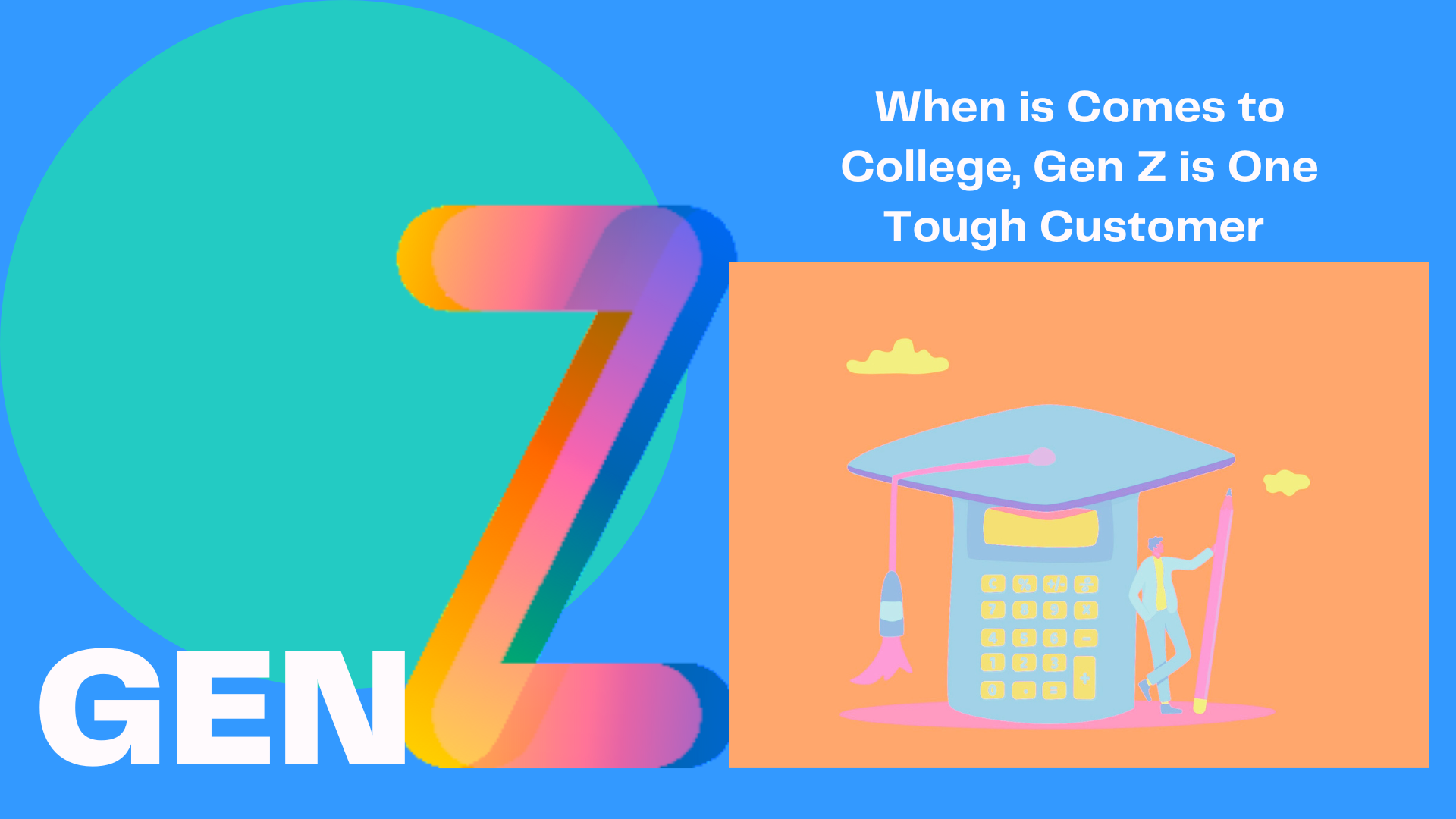Let’s start with the fact that today fewer people are going to college than in recent years.
- In 2022, just 15.1 million students enrolled in an undergraduate degree program. (*NSCRC estimates). It’s the lowest enrollment since 2007.
This has higher ed institutions scrambling with how to manage lost revenue, a reduced offering of classes and other amenities that draw in students. Those students are largely made up of Generation Z.
Next, let’s acknowledge that Gen Z is strikingly different than past generations:
- They are the most racially, ethnically, and sexually diverse generation in history.
- They are the first generation to have 24/7 access to the internet, connected devices, and social media since birth.
- They are more fiscally responsible than previous generations. They generally want to avoid debt and start saving for retirement earlier than their parents did.
Understanding these 3 things about Gen Z helps us understand how they approach their future and decisions on higher education options.
They’re researching alternatives with a focus on:
- How much will it cost? Can I handle the debt?
- How long will it take to earn a degree?
- What fits my learning style and lifestyle?
Cost Conscious
The student is the customer in today’s college application process. Parents don’t make the decisions for these kids. They are talking to counselors as early as 9th grade about their options.
They are informed and some may even be taking college-level courses at their local community college to earn credits. Why? Because these courses are lower cost or free, not to mention completed before high school graduation.
With the average cost of a 4-year degree at $142,000 many students are considering a different path for themselves.
High tuition and the pandemic have hit lower-income students especially hard. “In households making under $50,000, just 37% planned to carry on their education without making a change — 7 percentage points below average” according to the **NCES.
Time Sensitive
According to a recent ECMC Group survey of 14–18-year-olds, many are looking for shorter, less expensive, and more direct-to-career pathways in high-demand industries.
- More than half of teens are open to something other than four-year college and nearly half believe they can achieve success with education attained in three years or less.
- Most teens prefer learning hands-on skills either in a lab/classroom or through on-the-job experiences.
- More than three-quarters of teens feel pressure to pursue a four-year degree, despite many being open to other pathways.
Many are considering alternatives like skills-based education options (i.e., trade skills, nursing, STEM, etc.) that will get them into the workforce and making money faster. They also recognize that they will need to continue to stay up-to-date on their skills throughout their careers. Companies are also recognizing this shift with on-the-job training and even removing the 4-year degree requirement from job postings opening opportunities for self-taught skills in tech, for example.
Learning Style/Lifestyle
Understanding Gen Z’s interest in educational alternatives, colleges are exploring more flexible learning options including:
- Online and hybrid learning: The COVID-19 pandemic has accelerated the adoption of online and hybrid learning models in higher education. Institutions have had to pivot quickly to offer remote learning options, and many have invested in technology and infrastructure to support this shift. Online and hybrid learning offer flexibility and convenience, allowing students to learn at their own pace and from anywhere in the world.
- Personalized learning: Personalized learning is a trend that is gaining popularity in higher education. This approach emphasizes individualized instruction, with customized learning paths based on each student’s strengths, weaknesses, and interests. Personalized learning uses data analytics and artificial intelligence to gather information about students’ learning styles and preferences, and then tailors instruction to meet their needs.
- Work-integrated learning: Work-integrated learning is an approach that combines classroom instruction with practical work experience. This trend is gaining traction as employers are increasingly looking for graduates who are job-ready and have practical skills. Work-integrated learning can take many forms, including internships, co-op programs, and apprenticeships, and provides students with opportunities to gain hands-on experience and make valuable connections in their field.
As these tough customers take the world by storm, smashing up the status quo, higher education institutions will have to keep up with more cost-effective, personalized options to compete.
If you’d like to discuss these trends and more about our experience in higher ed, reach out. We’re all ears. Let’s start a conversation.
*National Student Clearinghouse Research Center
**National Center for Education Statistics
